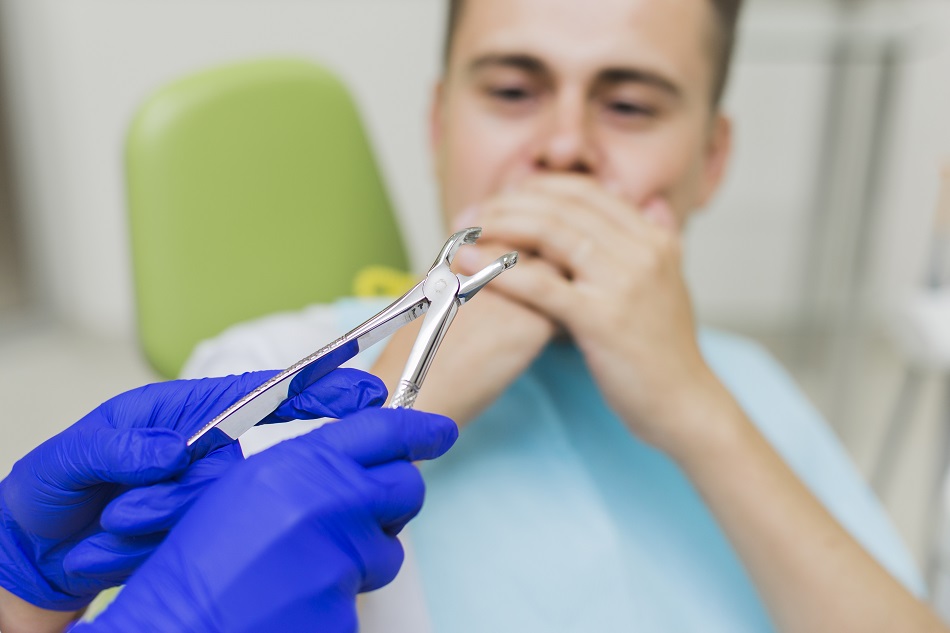
We all want to keep our natural teeth for as long as possible. But sometimes, pulling out a tooth is the healthiest and safest option. Tooth extraction is a common dental procedure used to remove a damaged, infected, or problematic tooth.
It might sound scary, but with the right knowledge and care, it becomes much easier. In this article, we’ll explain why tooth extraction may be necessary, what happens during the procedure, and how to take care of your mouth afterward.
🔹 When Is Tooth Extraction Needed?
Here are some of the most common reasons dentists suggest removing a tooth:
1. Tooth Decay That Can’t Be Fixed
When a tooth is badly decayed and the infection reaches deep into the root, it becomes impossible to save it with fillings or even a root canal. In such cases, extraction prevents the infection from spreading to nearby teeth and gums.
2. Tooth Damage or Injury
Teeth that are broken or cracked during an accident, or while chewing hard food, may not be repairable. If the damage is too deep or the tooth structure is weak, the dentist might remove it.
3. Crowded or Misaligned Teeth
Sometimes, extra teeth or overcrowding may prevent others from growing properly. Tooth extraction is commonly done before orthodontic treatments (like braces) to create space in the mouth for alignment.
4. Infected or Impacted Wisdom Teeth
Wisdom teeth often grow in wrong directions, get stuck (impacted), or cause gum pain and swelling. Dentists usually recommend early extraction to prevent bigger problems later.
5. Severe Gum Disease
Advanced gum disease (periodontitis) can cause the bone supporting your teeth to weaken. If the tooth becomes loose and unstable, extraction helps save your gums and nearby teeth.
You can explore more oral care information and remedies at https://healthpoint.co.in, where expert-backed advice is available for everyday dental problems.
🔹 What Happens During the Tooth Extraction Process?
Understanding the steps can reduce fear. Tooth extraction is a safe and routine process:
Examination and X-ray: The dentist will check the condition of the tooth and surrounding bone.
Anesthesia: Local anesthesia is used to numb the area, so you feel no pain.
Tooth Removal: The dentist gently loosens the tooth and removes it with special tools.
Gauze and Clotting: A gauze pad is placed to stop bleeding and help form a blood clot.
Stitches (if needed): Sometimes stitches are used to close the area, especially in surgical extractions.
The whole process is usually completed in 20 to 40 minutes depending on the condition.
👨⚕️ Expert Advice by Dr. Sachin Mehta, Prosthodontist
“Tooth extraction is never the first step, but sometimes it’s the only solution to stop pain and protect your overall oral health,” says Dr. Sachin Mehta
“The key is not to delay the visit. If pain or swelling lasts beyond 48 hours, get it checked. After extraction, avoid cold drinks, stick to soft foods, and follow your dentist’s instructions for fast healing.”
🔹 What to Do After a Tooth Extraction
Healing takes a few days, but if you follow proper care, you’ll be comfortable soon. Here are important aftercare tips:
1. Rest for 24 Hours
Avoid heavy activity, bending, or lifting. Rest helps your body heal faster.
2. Use Cold Compress
Apply a cold pack on the cheek area for 10–15 minutes at a time to reduce swelling.
3. Eat Soft Foods
Stick to foods like mashed potatoes, rice, bananas, soup, curd, and smoothies for 2–3 days.
4. Avoid Hot Drinks and Smoking
Don’t drink tea or coffee immediately after the procedure. Avoid smoking or alcohol as they slow down healing.
5. Don’t Use a Straw
Sucking from a straw can disturb the blood clot and lead to a condition called dry socket, which is very painful.
6. Salt Water Rinse
After 24 hours, gently rinse your mouth with warm salt water twice a day to clean the area and prevent infection.
7. Take Medicines as Prescribed
Always take painkillers or antibiotics given by your dentist to avoid infection and manage discomfort.
For more aftercare instructions and natural healing tips, visit https://healthpoint.co.in, your reliable health guide online.
🔹 Focus Keyword: Tooth Extraction
The decision to go for a tooth extraction depends on many factors, including the condition of your tooth, overall dental health, and professional dental advice. Knowing the signs and taking timely action can save you from serious oral problems later.
Modern dental care makes extractions quick, painless, and safe. So, if you’re facing constant pain, swelling, or pressure, it’s time to consult your dentist.
✅ Final Thoughts
Tooth extraction is not something to fear. It’s a step toward better oral health when your tooth can no longer be saved. Whether it’s due to damage, decay, or alignment issues, getting the procedure done at the right time can prevent future complications.
Take care of your mouth after the extraction, follow the advice of your dentist, and give your body the time it needs to heal.
Lorem ipsum dolor sit amet, consectetur adipiscing elit. Ut elit tellus, luctus nec ullamcorper mattis, pulvinar dapibus leo.



